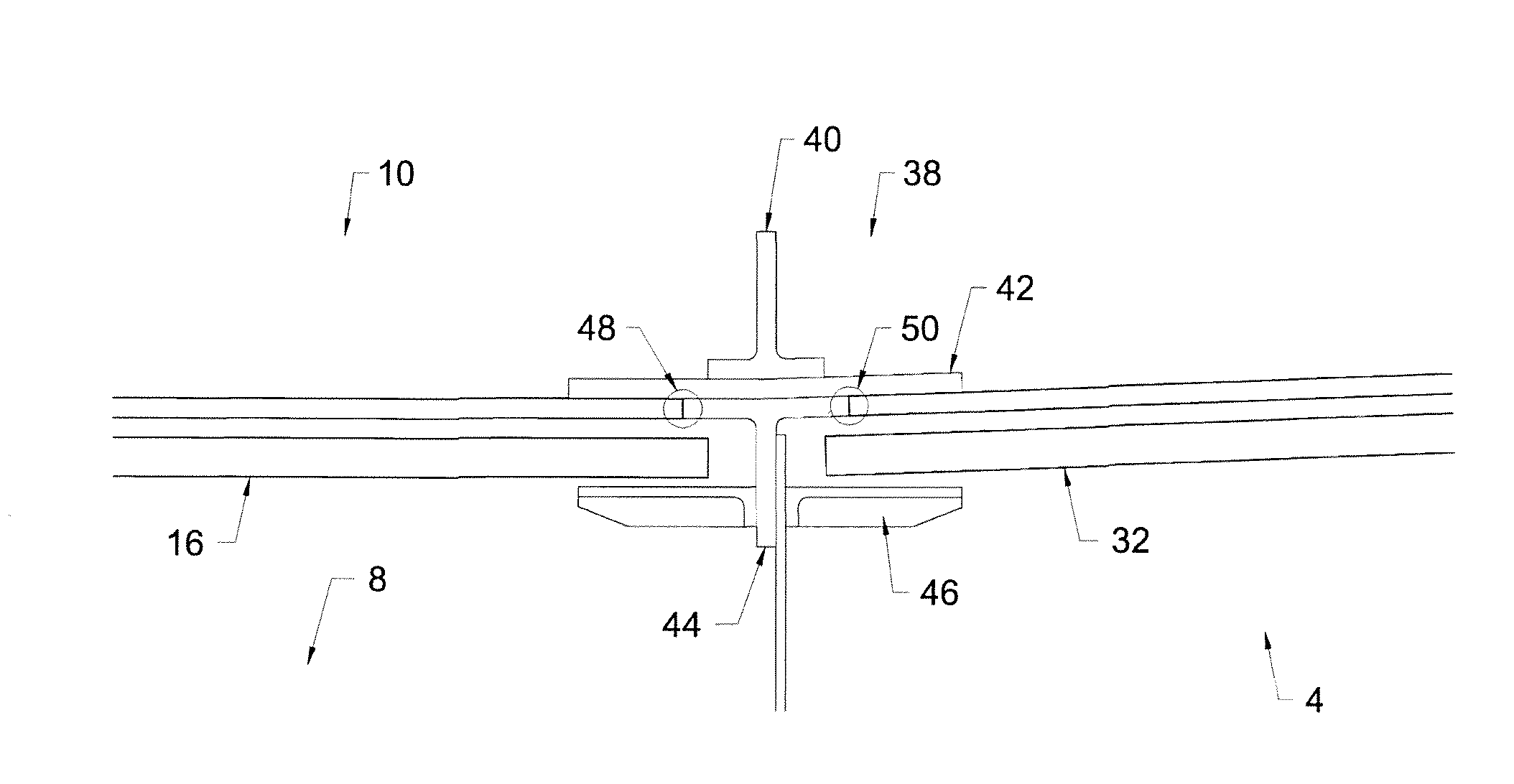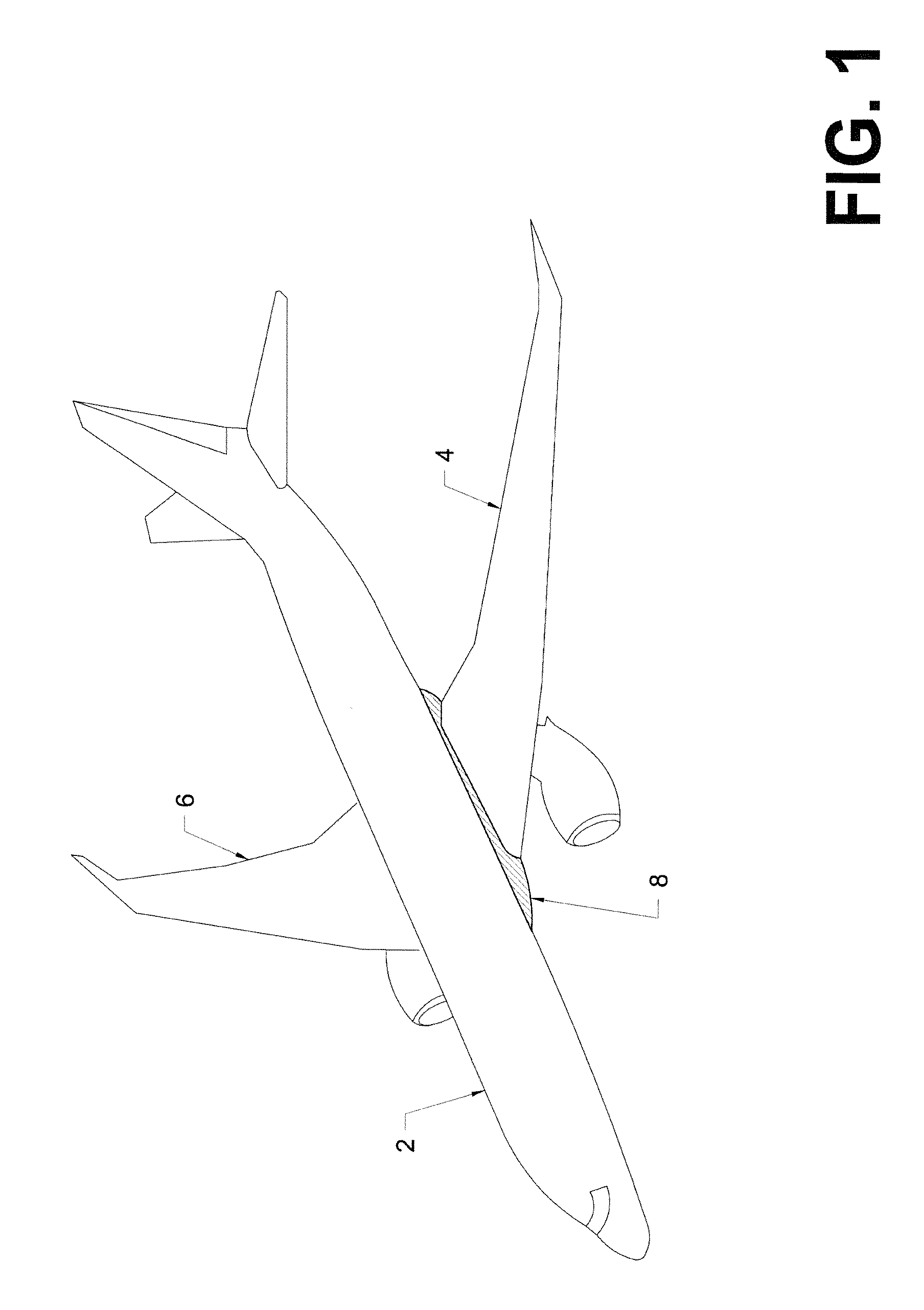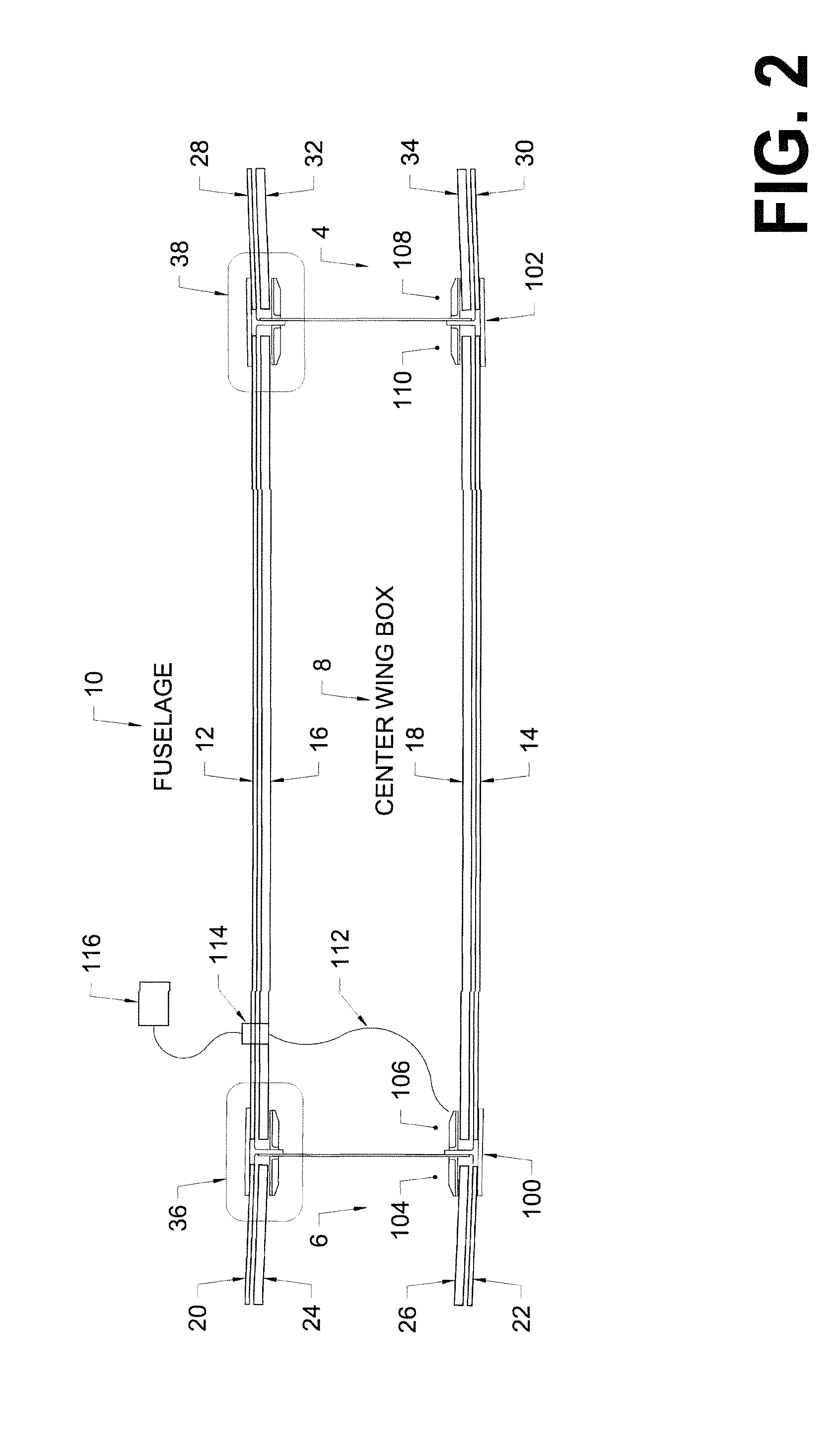Stable grounding system to avoid catastrophic electrical failures in fiber-reinforced composite aircraft
a fiber-reinforced composite aircraft and stable grounding technology, which is applied in the direction of structural/machine measurement, instruments, transportation and packaging, etc., can solve the problems of catastrophic delaminate, significant loss of life and aircraft damage, and catastrophic failure of fiber-reinforced composite materials
- Summary
- Abstract
- Description
- Claims
- Application Information
AI Technical Summary
Benefits of technology
Problems solved by technology
Method used
Image
Examples
Embodiment Construction
[0119]The following description will typically be with reference to specific structural embodiments and methods. It is to be understood that there is no intention to limit the invention to the specifically disclosed embodiments and methods but that the invention may be practiced using other features, elements, methods and embodiments. Preferred embodiments are described to illustrate the present invention, not to limit its scope, which is defined by the claims. Those of ordinary skill in the art will recognize a variety of equivalent variations on the description that follows. Like elements in various embodiments are commonly referred to with like reference numerals.
[0120]The fiber-reinforced wings and wing boxes of Boeing 787's are described very well in an article in The Seattle Times, dated Jul. 30, 2009, entitled “Double trouble for Boeing 787 wing” by Dominic Gates, that appears on the front page and on A8, an entire copy of which is incorporated herein by reference. That artic...
PUM
 Login to View More
Login to View More Abstract
Description
Claims
Application Information
 Login to View More
Login to View More - R&D
- Intellectual Property
- Life Sciences
- Materials
- Tech Scout
- Unparalleled Data Quality
- Higher Quality Content
- 60% Fewer Hallucinations
Browse by: Latest US Patents, China's latest patents, Technical Efficacy Thesaurus, Application Domain, Technology Topic, Popular Technical Reports.
© 2025 PatSnap. All rights reserved.Legal|Privacy policy|Modern Slavery Act Transparency Statement|Sitemap|About US| Contact US: help@patsnap.com



